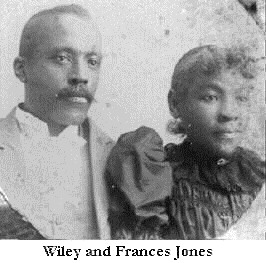Wiley & Frances Jones
Image Credit:
Homer Historical Society
Wiley Jones came to Homer from Decatur, Georgia, after the Civil War with William C. Custer. Jones would run a barber shop for years in Homer, was a trustee of the Homer Savings and Loan Association, and was nominated to serve on the Village Board several times. In 1877, Wiley Jones and Mrs. Frances Roberson Morgan were married at the home of Rev. Whitlock. Frances died in 1914 and Wiley Jones died in 1919 in a fire while lighting his stove. Wiley and Frances are buried in the Homer G.A.R. Cemetery.
Decade:
1870-1879
People:
- Frances Jones
- Wiley Jones
Location(s):
- Homer, Illinois
Additional Homer Trail Sites

Make a difference.
The Trail relies on the generosity of private and public donations. With your gift, you help ensure that the Trail is a free, accessible experience for all. You also help make our vision—to inspire conversation, expand understanding, and contribute to a better society—a reality.
